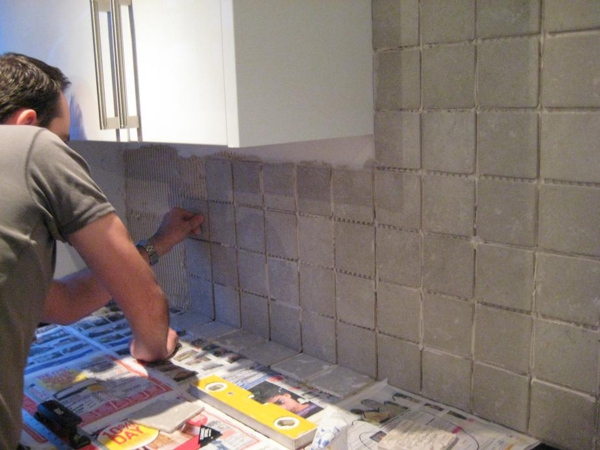Most DIY tilers love to install porcelain and ceramic tiles. With marble and granite just about everyone can install them with ease. In today’s trendy market there’s a push to buy natural stone for the entire home and exterior. Though there are some things to think about before purchasing this material, keep in mind the added value and the low cost of ownership associated with stone and granite tiles. Often stone is considered maintenance free but with any type of flooring or walls there will be some form of care to be considered.
As with any tile installation project it’s important to have good sub-flooring in place. This can include a cement slab or a cement backer board. Often with slabs a crack isolation membrane is in order, especially with all natural stone. If any movement occurs in the slab under-base after the installation this will telegraph up through the tiles causing them to crack. Crack isolation membrane comes in two forms, brush on and roll out. In most instances with stone it’s best to use roll on as this will cure any issues with movement and any problems with damaging all the hard work put into the job. To learn more about CIM take a look in for a Denver Granite Outlet or any other outlet in the local area.

When sub flooring or a cement slab is being used be absolutely sure it’s level, clean and dry. If an existing floor is there a good cleaning is a must. A good thing to keep in mind as well is to store the tiles in a dry area. Moisture can be a major problem for this project; even dampness to a tile can throw off the bonding agent and cause problems. If the floor is unlevel this can be remedied by using self-leveling thinset. If a slab is not level it can also be sanded with a commercial floor sander (this is something you will want to rent). Every issue with floors can be fixed it’s just how and at what cost.
Natural stone has one inherit factor, it’s conductive to heated floors. This is a major benefit for modern homes, not just for the coming trend but to enhance a home’s ability to save money over the long run. When searching for natural stone tiles keep in mind the advantage for use in energy efficient homes.
When tiling a wall with natural stone everyone should consider the weight factor. This is especially true with wood or drywall. The best is to use cement backer board to help carry the burden with the added advantage of a good bonding surface. Using cement board is a good ideal weather it be for flooring or walls as both support the heavy weight that is associated with this material.
When marking out a room to find a center always use a chalk line. Starting the installation always choose the point that’s farther from the doorway. This will keep you tiling without having to wait for the installed tiles to set. Spacers used for natural stone vary but often the grout line is much thinner than most other tiles.
Mix the tiles while setting them in place. Often boxed stone tiles are from the same lot and the same cutting. Mixing them from each box gives a uniform aspect of being a panel all its own. To know and learn more on how to set natural stone tiles take a look in for a Denver Granite Outlet or any other outlet in the local area.
When setting stone be sure to have the right amount of bonding agent. This can differ from stone to stone and also change depending on what area of the home the work is in. There are specific bonding agents for the bathroom and altogether different for an exterior patio. While installing be sure to twist the tile into place removing any air pockets etc. If the mortar has been left on the stone wipe as soon as possible with a damp sponge. If not done right away a stain can easily alter the appearance.
Grout and sealer are two important steps to know. With stone everyone should apply the sealer first to protect the grout from staining. Each step should take approximately 24 hours to set and dry. Often a slurry grout is used on stone so it can be filled in with a squeegee. This helps keep the mess off the face of the stone and away from any issues. In the end apply a secondary sealer to guard not just the stone but the entire project.
Jordan Hughes use to teach DIY in the local adult education outlets in Denver.

